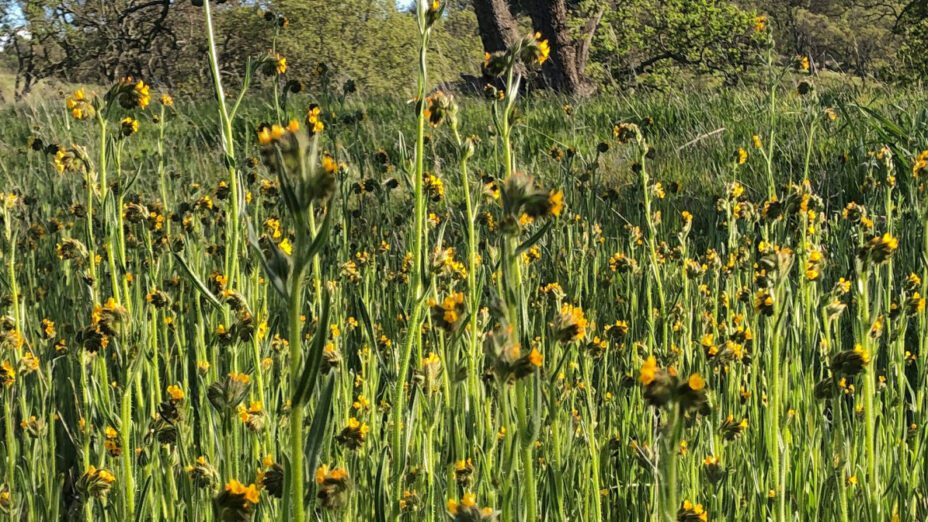
Stewardship Update
Written by Haley Sutton, Land Stewardship Associate
An Update on Our Programs
We miss working with our wonderful volunteers and are hopeful we’ll be able to work in the field with everyone soon! Right now, our policies have not changed, but we’re keeping a close eye on the situation and have constructed a phased re-opening plan for our volunteer programs as local and state regulations allow.
Planting and Protecting Natives
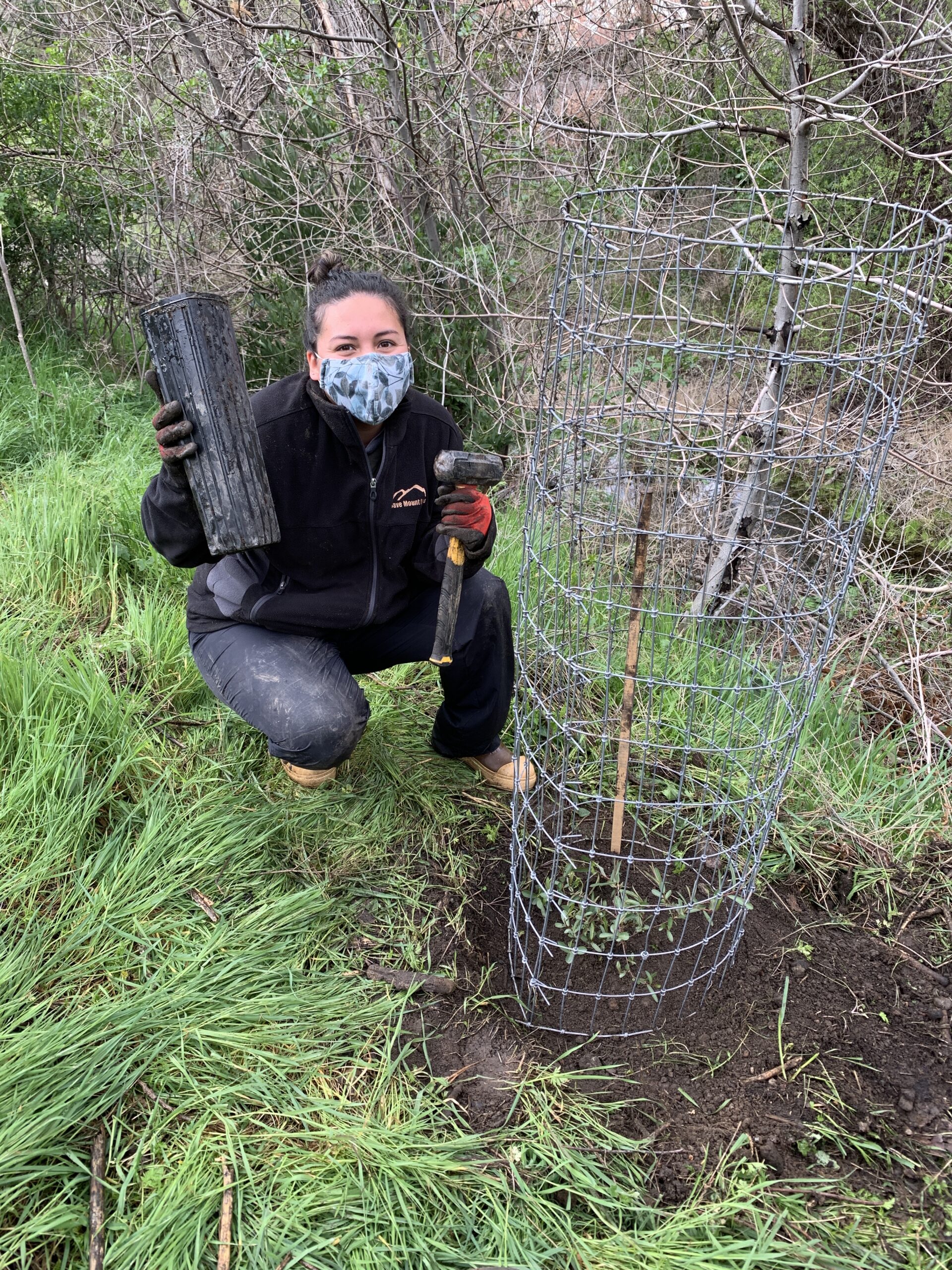
Roxana with willow planting tools (Haley Sutton)
Staff planted additional natives at Marsh Creek 4 on the creek banks and in the meadow. As new plants are added to this site, staff are creating islands of natives to allow space for a mower to trim grasses for fire abatement.
An unlucky black sage planted in January succumbed to a gopher or ground squirrel’s hunger, with roots completely munched away. In response to the unfortunate event, the next round of plantings have a combination of underground and above-ground cages to deter all sorts of herbivory and increase establishment success!
The staff has also identified volunteer oak seedlings on our properties that could use some support. With deer, wild pigs, and cattle on some properties, as well as a greater risk of drought, any seedling faces challenges becoming a tree.
Staff has begun aiding seedling defenses at the Curry Canyon Ranch Lower 200 by adding tree protection tubes that will deter herbivory while creating a miniature greenhouse around each tree. Between acorn collection and planting in the fall and winter, and caging volunteers in the spring, we hope to increase young tree survival on our properties!
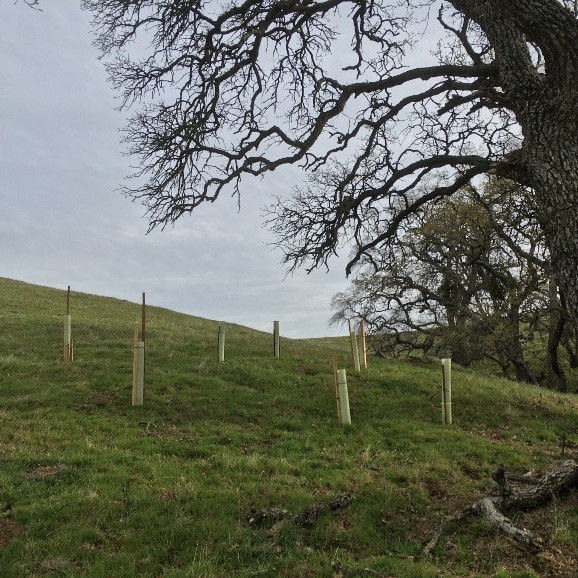
Protected oaks (Sean Burke)
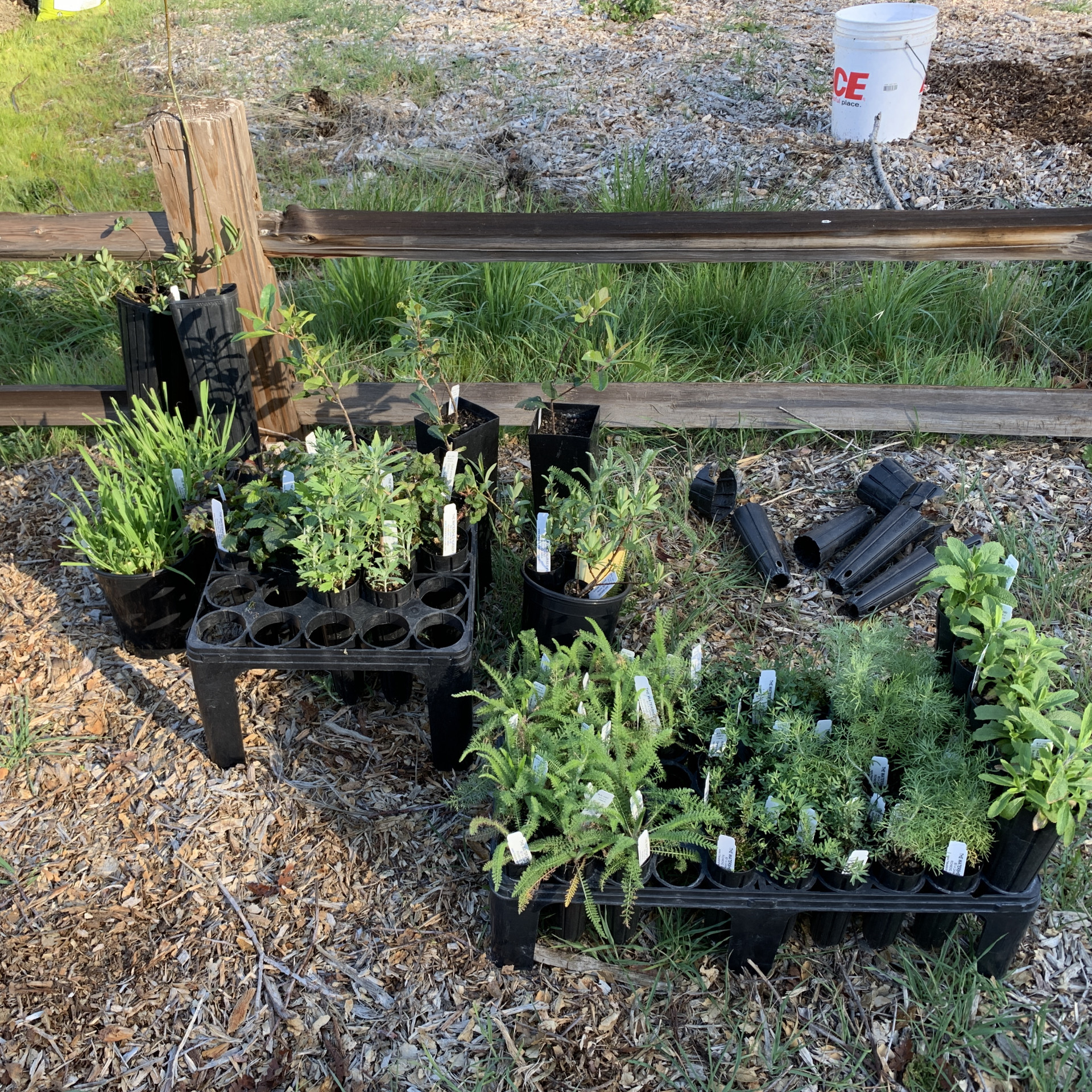
Plantings ready for a new home (Haley Sutton)
In the Weeds

Weed whipping at Big Bend (Haley Sutton)
The rainy season is the perfect time for planting, but it’s also an important time for weed removal. With numerous properties containing various degrees of weed infestation, staff must be strategic with integrated pest management practices.
Recently, staff have focused on trimming a patch of barbed goat grass (Aegilops triuncialis) in the Lower 200, removing poison hemlock (Conium maculatum) at Marsh Creek 4, and artichoke thistle (Cynara cardunculus) at Mangini Ranch.
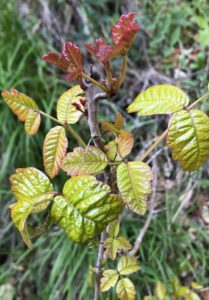
Poison oak (Haley Sutton)
Last month’s survey asked what weeds you love to hate, and responses included broom, oblong leaf spurge, yellow star thistle, Italian thistle, and cockleburs. Poison oak (Toxicodendron diversilobum) was also noted.
Although it may be a pest because of the contact dermatitis the plant may cause, the species is a California native and technically not a weed or invasive to our region. Poison oak offers multiple services to the ecosystem, including shade for other plant species, a food source with its berries and seeds, and a nesting habitat for birds and small mammals.
But please be careful while trekking around as the plant is often spotted right along trails. And remember, “leaves of three, let it be!”
Additionally, staff are shifting into fire abatement season, as all properties require a certain amount of mowing along fence lines and roads depending on property size.
The recent sporadic rains have impacted our ability to mow regularly because wet grass is harder to cut, and more rain resulting in more plant growth means more mowing. So far, staff started weed whipping and mowing at Big Bend, with plans to ramp up efforts this next month.
Upper Curry Canyon Quarantine in Effect
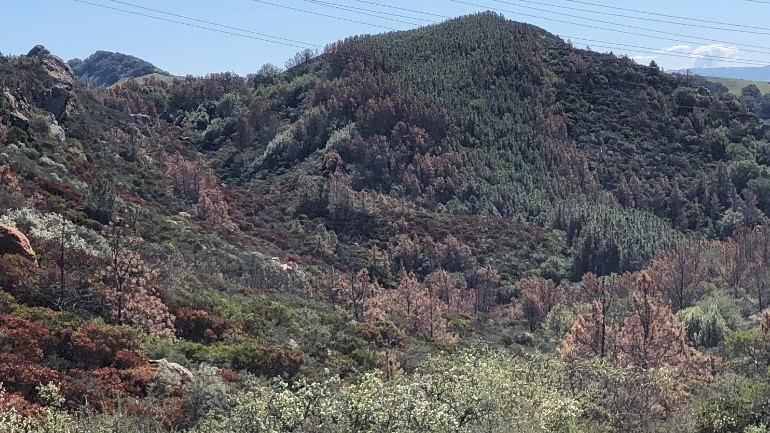
Dead knobcone pines in Mount Diablo State Park (Sean Burke)
Save Mount Diablo and Mount Diablo State Park staff are monitoring and investigating an ongoing die-off of manzanitas and knobcone pines from insects and a native pathogen in the Knobcone Point area of Mount Diablo. In response, Save Mount Diablo trails in and around Knobcone Point of Curry Canyon Ranch are under quarantine and inaccessible for any usage.
Education and Outreach
Written by Denise Castro, Education & Outreach Associate
Dr. Mary Bowerman Science and Research Program Grantees
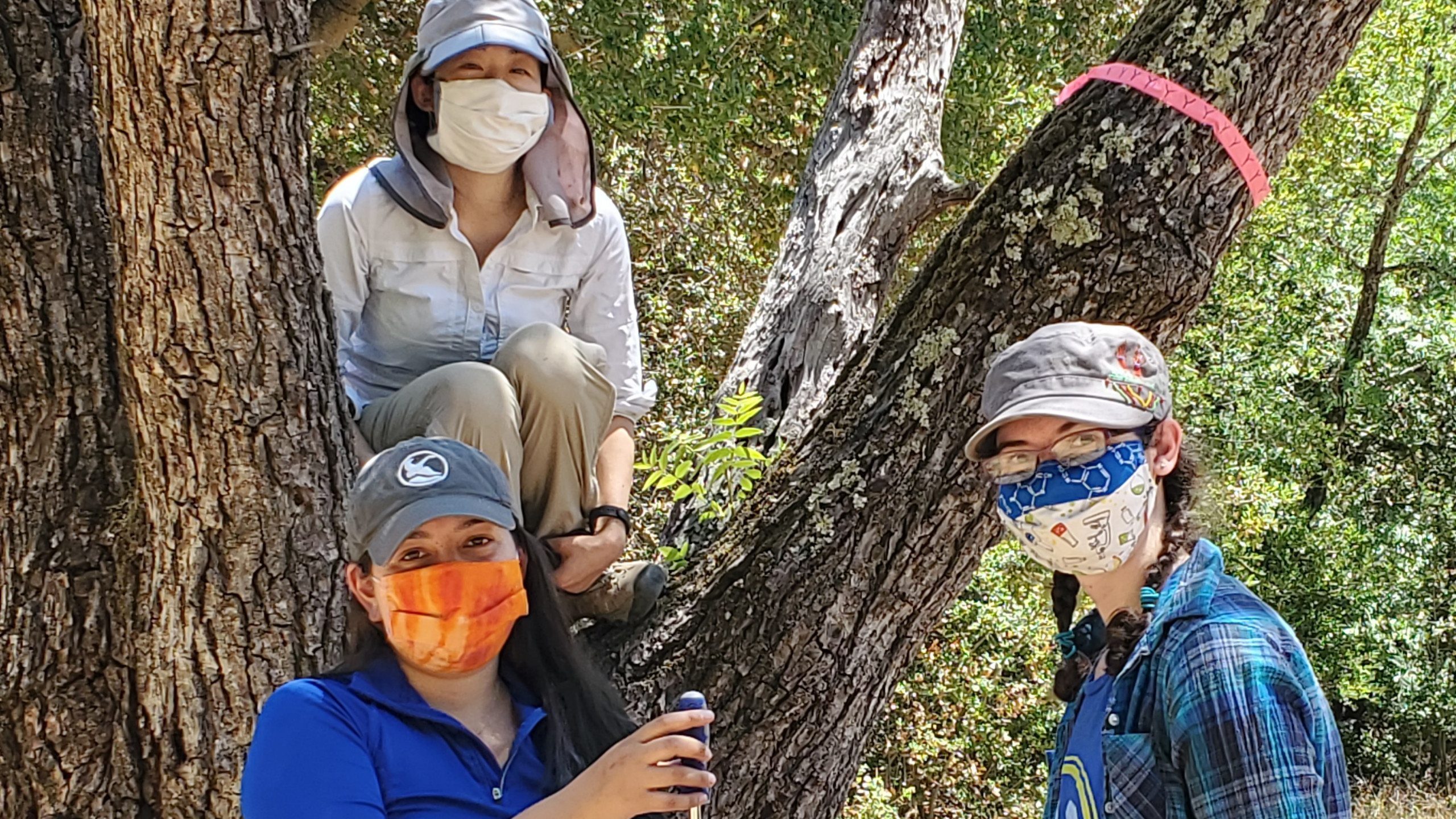
Team Squirrel (Erin Person)
In early March, the Dr. Mary Bowerman Science and Research Committee met to look over the new round of grant applications (deadline was February 26). The Dr. Mary Bowerman Science and Research program awards annual grants of up to $2,500 to researchers working on projects on or around the Mount Diablo
region. The committee has decided to award grant funds to four applicants:
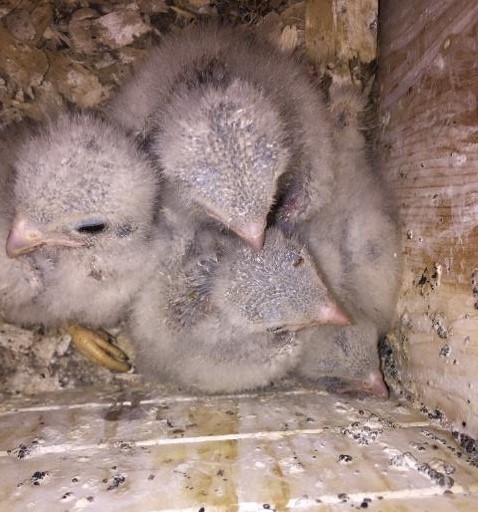
Baby kestrels (Brian Richardson)
- Brian Richardson from the Kestrel Campaign for his American kestrel wildlife camera study.
- Erin Person and Eileen Lacey from the department of integrative biology at UC Berkeley (in partnership with Dr. Jennifer Smith at Mills College) for their project on the social information transmission in California ground squirrels.
- Jada Baldoza and Dr. Jennifer Smith from Mills College (in partnership with UC Berkeley) for their project on the heritability of risk-aversion behaviors of California ground squirrels through whole-genome sequencing.
- Jennifer Natali from UC Berkeley for her Pine Creek tributaries habitat suitability assessment.
Conservation Collaboration Agreement
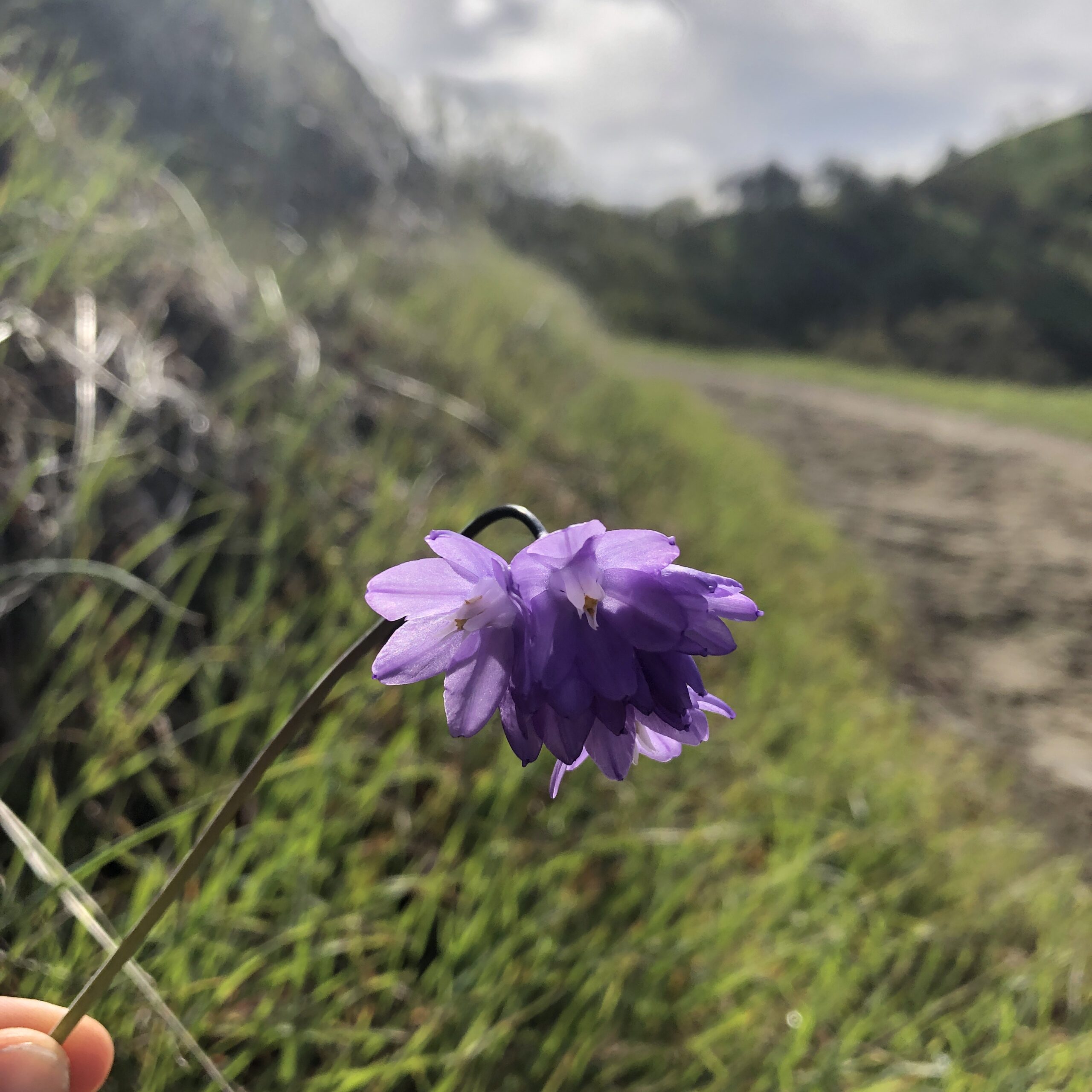
Denise Castro
Save Mount Diablo’s Conservation Collaboration Agreement program with local schools is back up and running! Staff presented through Zoom to two classes at Pittsburg High School.
Unfortunately, the field day had to be cancelled because of COVID-19 restrictions, but students are being guided to work on an environmental service project (picking up trash around their neighborhood, making eco-art, etc.) and a solo safely during their own time.
Staff will meet again with both the Pittsburg High School classes in mid-April to discuss their service projects and solos.
Join Our Annual BioBlitz

Save Mount Diablo’s 2021 BioBlitz is happening now! And to make the event more epic, we’re partnering up with the California Native Plant Society for their #FireFollowers project.
The BioBlitz this year is focused on the SCU Lightning Complex fire footprint and is running from April 17th to May 1st. Together we can collect data via iNaturalist and compare plants observed pre-and post-fire, increase understanding of California’s biodiversity, and collect valuable information to aid future conservation efforts.
Everyone is welcome to join! We’re encouraging participants to visit the burned areas at any point during the two weeks. For more information on the event and how to get started, please visit our BioBlitz page.
Discover Diablo Program
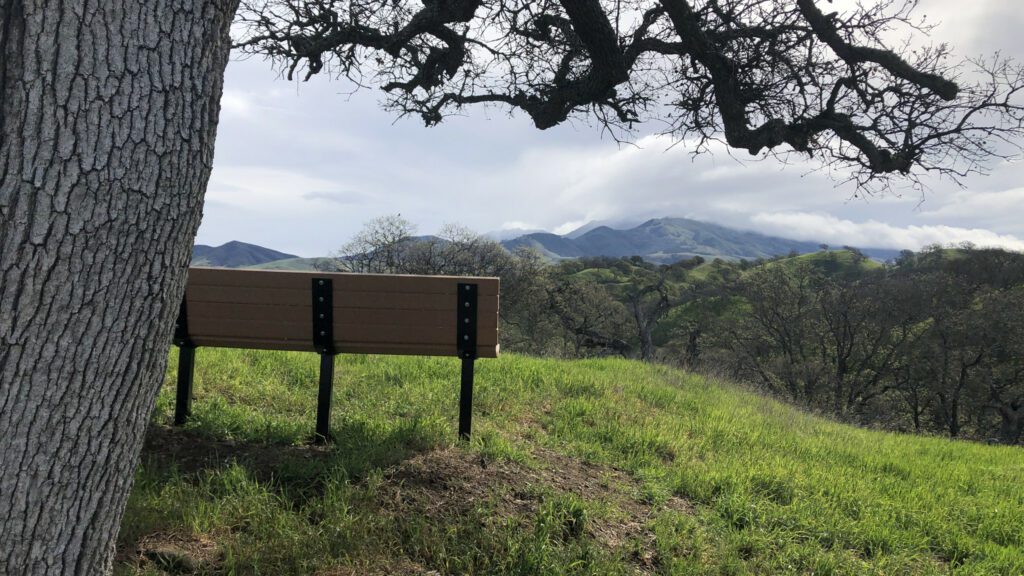
Denise Castro
Discover Diablo hikes in April were able to take place as county and state restrictions have loosened, and some hikes in May are now open to more participants! And more good news: we’ve got a new self-guided hike for the public to try! Because we couldn’t hold the March 20th Blue Oak Woodland in Spring hike, Jean Vieth (hike leader) helped create a self-guided hike for people to safely try on their own.
Answer our monthly stewardship question

